StuG III Ausf. D Assault Gun
In the late 1970s reports came to the authorities of a German Stug III Ausf D being found on an old battlefield. It was recovered and it was decide it would be used as a war memorial to those that lost their life in the siege of Moscow in 1941. It was a very early version of the StuG III. Only one other had been restored at that time and was kept in the Swedish Tank Museum. It was very valuable. In 2010 the war memorial was rebuilt and the StuG III sent away for restoration.
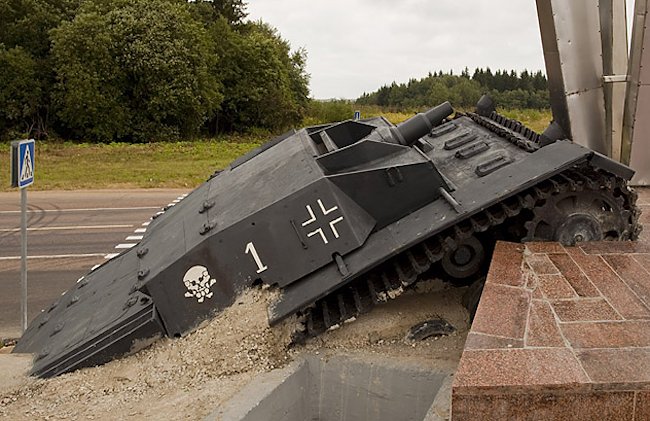
German StuG III Ausf. D Assault Gun (Photographer not known)
A thief stole many parts from the vehicle during the restoration process and sold them on the black market. These parts were replaced with parts from other more modern and less valuable WW2 StuG III wrecks or newly fabricated. He was captured but after a three year trail there was not enough evidence to secure a conviction. On the site of the memorial eleven Red Army engineers reputedly held up the German Army’s advance on Moscow by destroying twenty of its tanks. The date of the action, 18 November 1941, is marked on the side of the marble structure.
Location
The Russian city of Volokolamsk is 120 km west of Moscow. The Memorial is located to the east of the city on the road that goes towards the town of Anino. This is a local road that runs parallel and just north of the main M-9 E22 road.It is about 5 km from the city centre of Volokolamsk.
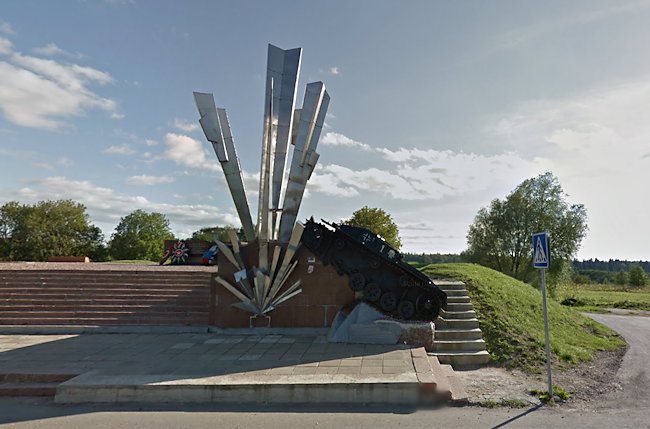
The silver metal shards represent an anti-tank mine exploding as the StuG III Ausf D ran over it. (Photographer not known)
The formation of the Sturmartillerie
This is a translation of an original German document that started the development of StuG IIIs, as assault artillery infantry support weapons (Sturmartillerie). Notice that their main role was to take out enemy machine gun posts. They were not to be used as normal artillery. Their ability to fire indirectly at targets they could not see was removed. They were restricted to fire in direct line of sight at targets within 4km using high explosive shells. (Just before the outbreak of war they were given armour piercing shells to take on enemy tanks that were within 500m)
On 16 June 1936, 2.GenStbH (2nd Department Of the General Staff of the Army) answered in a memorandum:
I) We agree on the technical development of a Sturmgeschütz (assault gun) and on its tactical commitment.
2.) It seems to point out the following distinctive features to the divisional artillery in order to give the Waffenamt (German Army Weapons Agency) simple and clear demands for the development of the assault gun:
a)The task of the Sturmartillerie is to destroy enemy machine-gun (MG) positions. This task will be performed within the scope of the infantry attack and at firing ranges of maximum 4km. Thus it is a weapon of the infantry, and has not to perform artillery duties Therefore, there is no need for shooting ranges of 7km or being fitting With indirect sighting devices.
b) At the same time the Sturmartillerie has to totally fulfill the tasks of the which is currently under development. Thus double development work will be avoided.
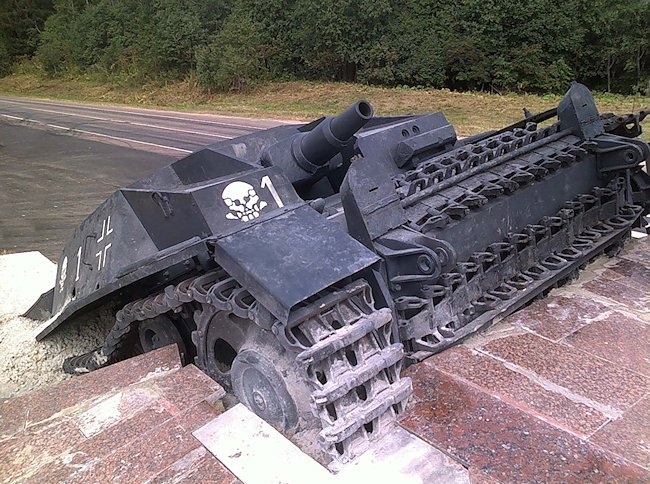
German StuG III Ausf. D Assault Gun Volokolamsk, Russia (Photographer not known)
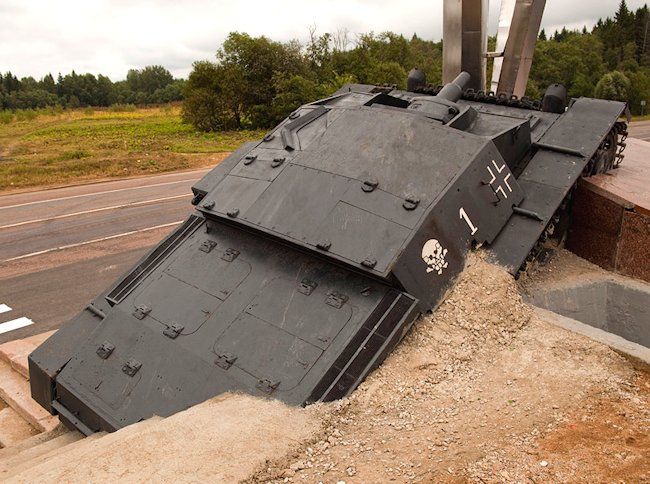
German StuG III Ausf. D Assault Gun Volokolamsk, Russia (Photographer not known)
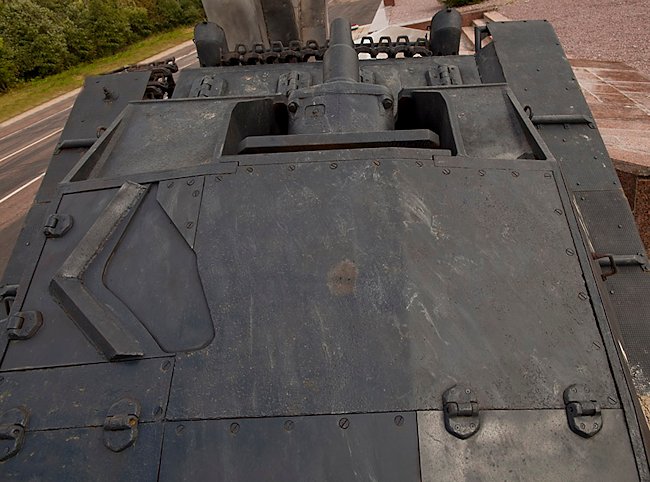
A lot of these hatches are not original StuG III Ausf D parts (Photographer not known)
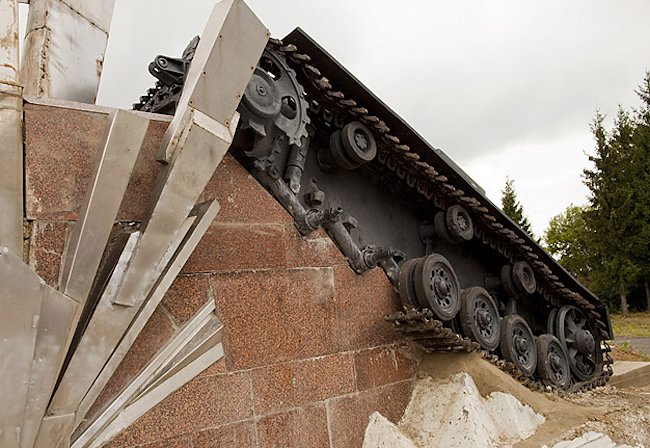
German StuG III Ausf. D Assault Gun Volokolamsk, Russia (Photographer not known)
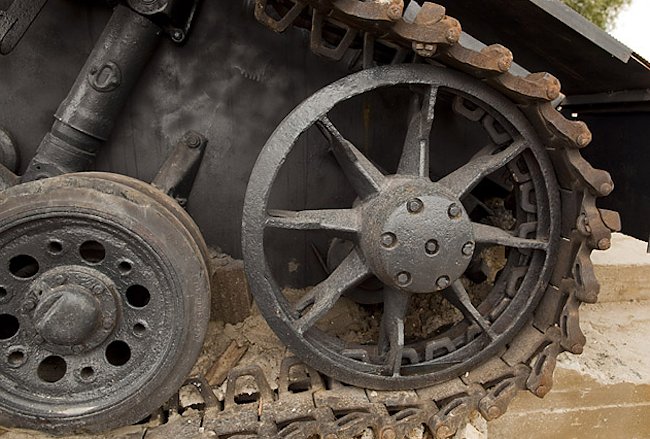
These track wheels have come from a different StuG III and some of the hydraulic suspension is missing. (Photographer not known)
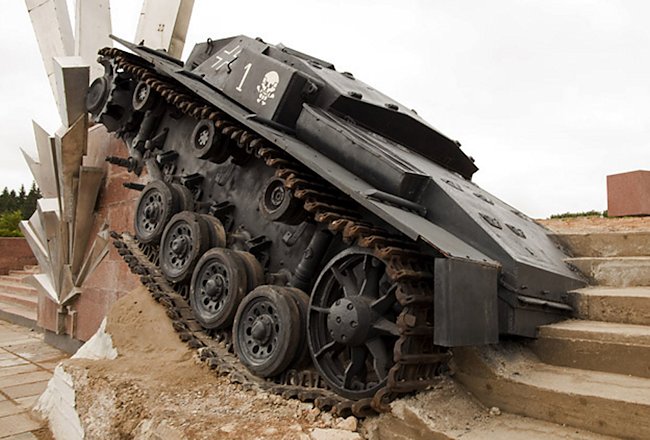
The supports for the exhaust cowling has been removed (Photographer not known)
